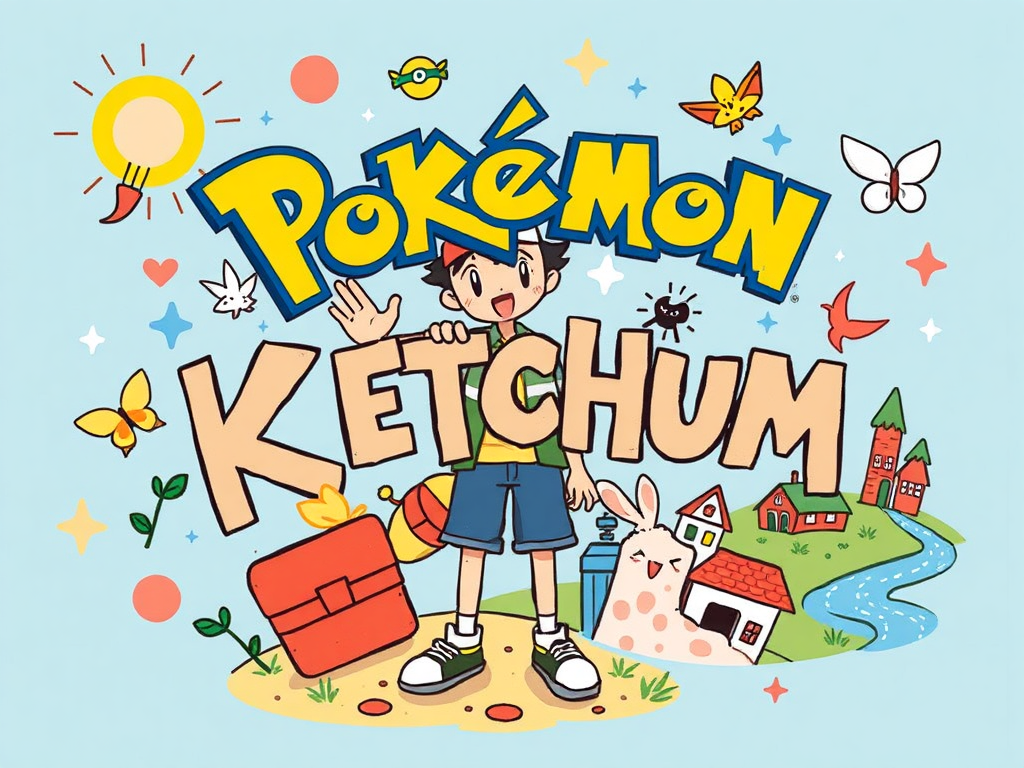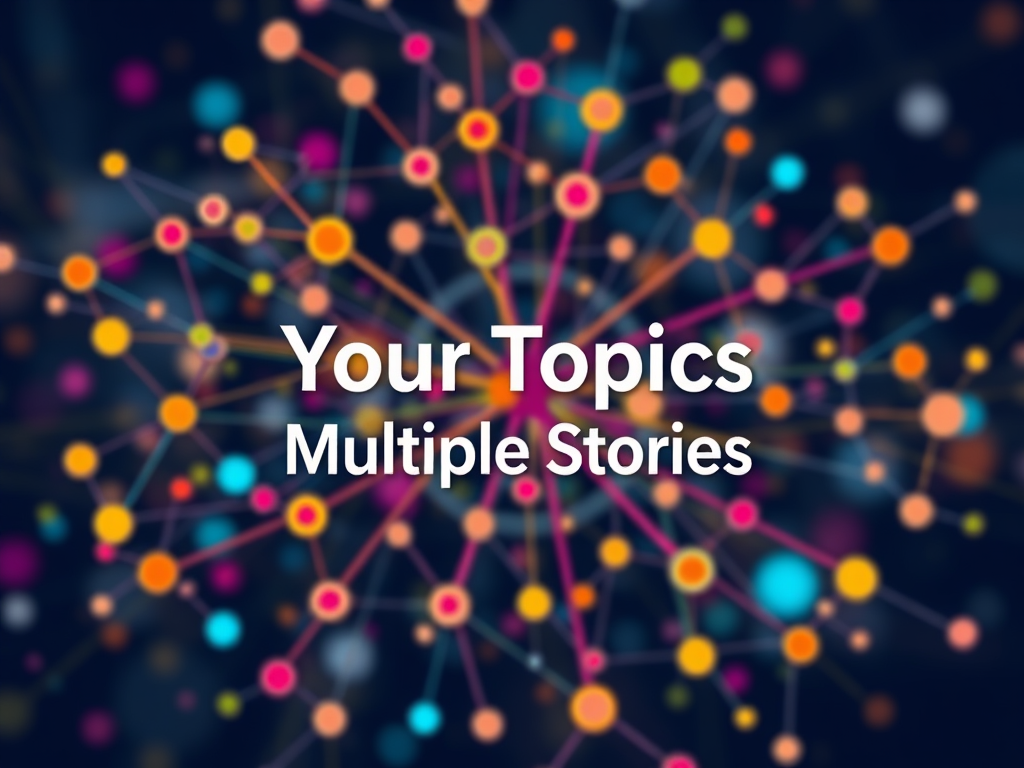In today’s hyper-connected digital landscape, FOMO marketing has emerged as one of the most powerful psychological triggers driving consumer behavior. When ChatGPT exploded onto the scene in late 2022, businesses worldwide scrambled to integrate artificial intelligence into their operations—not necessarily because they had a clear strategy, but because they feared being left behind.
This phenomenon perfectly illustrates how Fear of Missing Out influences decision-making at both individual and organizational levels. FOMO isn’t just a trendy acronym; it’s a fundamental aspect of human psychology that smart marketers have learned to leverage ethically and effectively.
Marketing psychology reveals that consumers make purchasing decisions based on emotions first, then justify them with logic. The fear of missing out taps directly into our primal need for social comparison and belonging, making it an incredibly potent tool for driving conversion optimization.
In this comprehensive guide, we’ll explore the science behind FOMO marketing, examine proven tactics, and discuss how to implement these strategies ethically while building long-term customer loyalty.
The Psychology Behind FOMO: Why It Works So Effectively
The Scientific Foundation of Fear-Based Marketing
FOMO was first scientifically studied by social psychologist Andrew Przybylski and his colleagues in 2013. Their research revealed that Fear of Missing Out stems from two fundamental human needs:
- Social connectedness – the desire to belong and stay connected with others
- Autonomy – the need to make choices that align with personal values and goals
Behavioral economics shows us that humans are naturally wired to avoid losses more than they seek gains. This cognitive bias, known as loss aversion, was extensively studied by Daniel Kahneman and Amos Tversky in their groundbreaking prospect theory.
The Role of Social Comparison Theory
Leon Festinger’s social comparison theory explains why FOMO is particularly powerful in our digital age. We constantly measure our experiences, achievements, and possessions against others. Social media platforms amplify this natural tendency by providing endless opportunities for comparison.
Consider these statistics:
- 73% of consumers check social media before making purchase decisions
- 92% of people trust recommendations from people they know
- 68% of consumers feel pressure to keep up with the latest trends
Neurological Responses to Scarcity and Urgency
Neuromarketing research reveals that scarcity marketing triggers specific brain responses:
| Brain Region | Response to Scarcity | Marketing Implication |
|---|---|---|
| Amygdala | Heightened alertness | Creates urgency |
| Prefrontal Cortex | Reduced rational thinking | Faster decisions |
| Reward Centers | Increased dopamine | Enhanced desire |
| Social Brain Areas | Activation of comparison circuits | Social proof effectiveness |
The Digital Amplification Effect
Digital transformation has intensified FOMO through several mechanisms:
- Real-time updates creating constant awareness of others’ activities
- Social media algorithms that highlight popular content
- Instant gratification expectations from mobile marketing
- Peer influence through reviews and social proof
Core FOMO Marketing Tactics: Proven Strategies That Drive Results
1. Scarcity Marketing: The Power of Limited Availability
Scarcity marketing leverages our natural response to limited resources. When something appears rare or difficult to obtain, we automatically assign it higher value.
Effective scarcity tactics include:
- Limited edition products or services
- Inventory-based marketing (“Only 5 left in stock”)
- Time-limited offers with clear expiration dates
- Exclusive access to select customers
- Members-only benefits and content
Case Study: Amazon’s lightning deals create artificial scarcity by limiting both quantity and time. This dual approach triggers multiple psychological responses simultaneously.
2. Urgency Marketing: Creating Time Pressure
Urgency marketing compresses decision-making time, reducing the opportunity for rational analysis and increasing impulsive behavior.
Key urgency techniques:
- Countdown timers on websites and emails
- Flash sales with tight deadlines
- Deadline pressure through specific end dates
- Limited-time promotions tied to events
- Immediate action incentives
Research shows that countdown timers can increase conversions by up to 332% when properly implemented.
3. Social Proof Marketing: Leveraging Peer Influence
Social proof reduces uncertainty by showing that others have made similar choices. This psychological trigger is particularly effective because it addresses the social comparison aspect of FOMO.
Types of social proof:
- Customer testimonials and reviews
- User-generated content showcasing product usage
- Influencer endorsements and partnerships
- Social media engagement metrics
- Purchase notifications (“250 people bought this today”)
4. Exclusive Access and VIP Treatment
Exclusive access marketing creates a sense of privilege and belonging to a select group. This tactic appeals to our desire for social status and recognition.
VIP marketing strategies:
- Early access to new products or sales
- Private events and webinars
- Insider information and content
- Tiered loyalty programs with escalating benefits
- Invitation-only communities and platforms
Digital Marketing Channels: Where FOMO Tactics Excel
E-commerce and Online Shopping
E-commerce optimization heavily relies on FOMO tactics because online shoppers can’t physically examine products. Digital scarcity helps compensate for this limitation.
Effective e-commerce FOMO tactics:
- Real-time inventory updates showing stock levels
- Recent purchase notifications from other customers
- Abandoned cart recovery emails with urgency messaging
- Personalized recommendations based on browsing behavior
- Dynamic pricing that reflects demand
Social Media Marketing
Social media platforms are natural environments for FOMO marketing because they’re built around social comparison and real-time updates.
Platform-specific strategies:
- Instagram Stories with limited-time offers
- Facebook Live events for exclusive content
- Twitter flash sales and announcements
- TikTok trending challenges and limited content
- LinkedIn professional networking events
Email Marketing Campaigns
Email marketing remains one of the most effective channels for FOMO marketing because it allows for personalized, direct communication.
Email FOMO tactics:
- Subject lines that create urgency
- Personalized offers based on user behavior
- Segmented campaigns for different customer groups
- Automated sequences that build anticipation
- Visual elements like countdown timers and progress bars
Content Marketing and Storytelling
Content marketing can incorporate FOMO through storytelling that highlights transformation and success stories.
Content FOMO strategies:
- Case studies showing dramatic results
- Behind-the-scenes content creating exclusivity
- Limited-time content that disappears after viewing
- Educational content that positions products as solutions
- Community-generated content showcasing user success
Industry Applications: How Different Sectors Use FOMO
Fashion and Retail Marketing
Fashion marketing naturally lends itself to FOMO tactics because fashion is inherently about trends and social status.
Retail FOMO tactics:
- Seasonal collections with limited availability
- Influencer collaborations creating buzz
- Pre-order campaigns for exclusive items
- Size and color scarcity notifications
- Style inspiration from social media
Technology and Software Marketing
Technology marketing often uses FOMO around innovation and competitive advantage.
Tech FOMO strategies:
- Beta access to new software
- Early adopter programs and pricing
- Feature releases with limited availability
- Conference exclusives and announcements
- Innovation showcases highlighting cutting-edge developments
Travel and Hospitality Marketing
Travel marketing excels at FOMO because experiences are inherently time-sensitive and location-dependent.
Travel FOMO tactics:
- Booking deadlines for special rates
- Seasonal availability restrictions
- Room scarcity notifications
- Experience exclusivity (limited tour groups)
- Weather-dependent offers
Financial Services Marketing
Financial services marketing uses FOMO around investment opportunities and financial security.
Financial FOMO strategies:
- Market opportunity timing
- Interest rate changes and deadlines
- Investment minimums and exclusivity
- Educational content about missing opportunities
- Regulatory changes creating urgency
Measuring FOMO Marketing Success: Key Metrics and Analytics
Conversion Rate Optimization
Conversion rates are the primary metric for measuring FOMO marketing effectiveness. Track these key indicators:
- Overall conversion rate across all channels
- Channel-specific conversion rates to identify top performers
- Campaign conversion rates for individual FOMO initiatives
- Micro-conversion rates for specific actions (email signups, cart additions)
- Attribution modeling to understand the customer journey
Customer Acquisition Metrics
Customer acquisition metrics help evaluate the long-term impact of FOMO marketing:
| Metric | Description | FOMO Impact |
|---|---|---|
| Customer Acquisition Cost (CAC) | Cost to acquire one new customer | Often lower due to faster decisions |
| Customer Lifetime Value (CLV) | Total revenue from a customer relationship | May be lower if quality is compromised |
| Time to Purchase | Duration from awareness to purchase | Significantly reduced with effective FOMO |
| Purchase Frequency | How often customers buy | Can increase with ongoing FOMO campaigns |
Engagement and Behavioral Metrics
User engagement metrics reveal how well FOMO tactics resonate with your audience:
- Click-through rates on urgent marketing messages
- Time spent on landing pages with scarcity elements
- Social sharing of exclusive content
- Email open rates for deadline-driven campaigns
- Return visitor rates for limited-time offers
Brand Health Indicators
Monitor these metrics to ensure FOMO marketing doesn’t damage long-term brand reputation:
- Customer satisfaction scores
- Net Promoter Score (NPS) trends
- Brand sentiment analysis
- Customer retention rates
- Refund and return rates
Ethical Considerations: Responsible FOMO Marketing
The Importance of Authentic Marketing
Ethical marketing requires that FOMO tactics be based on genuine scarcity or urgency, not manufactured pressure. Authentic marketing builds trust and long-term relationships.
Principles of ethical FOMO:
- Honest communication about availability and deadlines
- Transparent pricing without hidden fees or conditions
- Genuine value in limited offers
- Respect for consumer autonomy and decision-making time
- Long-term relationship focus over short-term gains
Avoiding Manipulative Practices
Psychological manipulation through FOMO can damage brand credibility and lead to customer churn. Avoid these practices:
- Fake countdown timers that reset automatically
- False scarcity claims about unlimited digital products
- Pressure tactics that exploit vulnerable populations
- Misleading urgency without genuine deadlines
- Artificial social proof with fabricated testimonials
Building Consumer Trust
Brand trust is essential for sustainable FOMO marketing. Focus on these trust-building strategies:
- Consistent delivery on promises made in urgent marketing
- Clear communication about terms and conditions
- Responsive customer service for questions and concerns
- Transparent business practices and policies
- Regular value delivery beyond limited-time offers
Regulatory Compliance
Consumer protection laws vary by jurisdiction, but common requirements include:
- Truth in advertising standards
- Clear disclosure of material terms
- Cooling-off periods for certain purchases
- Accessibility compliance for all marketing materials
- Data privacy protection in personalized marketing
Advanced FOMO Marketing Strategies
Personalization and Segmentation
Data-driven marketing allows for highly targeted FOMO campaigns based on individual behavior and preferences.
Personalization strategies:
- Behavioral triggers based on browsing history
- Demographic segmentation for relevant offers
- Purchase history analysis for targeted promotions
- Engagement level customization
- Geographic targeting for location-specific offers
Omnichannel FOMO Integration
Omnichannel marketing ensures consistent FOMO messaging across all touchpoints:
- Cross-channel consistency in urgency messaging
- Sequential campaigns that build anticipation
- Retargeting strategies for incomplete purchases
- Social media integration with email and web campaigns
- Mobile-first design for instant gratification
AI and Automation in FOMO Marketing
Artificial intelligence and marketing automation can optimize FOMO campaigns in real-time:
- Predictive analytics for optimal timing
- Dynamic content based on user behavior
- Automated triggers for cart abandonment
- Machine learning for campaign optimization
- Chatbot integration for immediate responses
Community Building and Exclusivity
Community marketing creates ongoing FOMO through exclusive group membership:
- Private Facebook groups for customers
- Exclusive forums and discussion boards
- VIP customer events and experiences
- Behind-the-scenes content for members
- Peer-to-peer recommendations and discussions
Future Trends in FOMO Marketing
Emerging Technologies
Digital trends are reshaping how FOMO marketing operates:
- Augmented reality for virtual product experiences
- Voice commerce and smart speaker integration
- Blockchain for verified scarcity and authenticity
- IoT devices for contextual marketing
- 5G connectivity enabling real-time experiences
Changing Consumer Expectations
Consumer behavior is evolving, requiring adaptive FOMO strategies:
- Sustainability focus in purchasing decisions
- Privacy concerns about data collection
- Authenticity demands from brands
- Social responsibility expectations
- Mental health awareness regarding pressure tactics
Generational Differences
Generational marketing requires different FOMO approaches:
Generation Z:
- Values authenticity and transparency
- Responds to social media urgency
- Expects instant gratification
- Influenced by peer recommendations
Millennials:
- Experience-focused purchasing
- Social proof driven
- Brand loyalty through values alignment
- Mobile-first expectations
Generation X:
- Value-conscious decision making
- Email marketing responsive
- Brand trust importance
- Work-life balance considerations
Baby Boomers:
- Traditional urgency marketing effectiveness
- Customer service expectations
- Word-of-mouth influence
- Security concerns in online shopping
Implementation Guide: Getting Started with FOMO Marketing
Step 1: Audit Your Current Marketing
Marketing analysis should evaluate existing FOMO elements:
- Website review for scarcity and urgency elements
- Email campaign analysis for psychological triggers
- Social media assessment for social proof
- Customer feedback on current tactics
- Competitor analysis for industry benchmarks
Step 2: Develop Your FOMO Strategy
Strategic planning for FOMO marketing implementation:
- Target audience identification and segmentation
- Channel selection based on customer preferences
- Content calendar for time-sensitive campaigns
- Budget allocation across different tactics
- Success metrics definition and tracking setup
Step 3: Create Compelling Content
Content creation for effective FOMO marketing:
- Urgency messaging that feels authentic
- Visual elements that create excitement
- Social proof collection and display
- Scarcity communications that build desire
- Call-to-action optimization for conversions
Step 4: Test and Optimize
A/B testing is crucial for FOMO marketing success:
- Subject line testing for email campaigns
- Countdown timer placement and design
- Scarcity messaging variations
- Social proof format and positioning
- Landing page optimization for conversions
Step 5: Monitor and Adjust
Performance monitoring ensures sustainable growth:
- Real-time analytics for campaign performance
- Customer feedback collection and analysis
- Conversion tracking across all channels
- Brand sentiment monitoring
- Competitor watching for industry changes
Common Mistakes to Avoid in FOMO Marketing
Overuse and Fatigue
FOMO fatigue occurs when customers become immune to urgency marketing due to overexposure:
- Constant urgency messages lose effectiveness
- Fake deadlines damage credibility
- Repetitive tactics become predictable
- Overwhelming frequency causes unsubscribes
- Lack of genuine value in offers
Ignoring Customer Segments
One-size-fits-all approaches fail in FOMO marketing:
- Demographic differences in psychological triggers
- Behavioral variations in response to urgency
- Cultural sensitivity in messaging
- Purchase history relevance
- Engagement level considerations
Neglecting Mobile Optimization
Mobile marketing is crucial for FOMO effectiveness:
- Mobile-responsive countdown timers
- Touch-friendly call-to-action buttons
- Fast loading times for urgent pages
- SMS integration for immediate notifications
- App optimization for seamless experiences
Failing to Deliver on Promises
Customer expectations must be met to maintain trust:
- Inventory accuracy for scarcity claims
- Delivery timelines for urgent orders
- Product quality matching promotional claims
- Customer service responsiveness
- Transparent communication about any issues
Conclusion: Mastering FOMO Marketing for Long-Term Success
FOMO marketing represents a powerful intersection of psychology and technology that can drive significant business results when implemented thoughtfully. The key to success lies in understanding the underlying behavioral economics and applying psychological triggers in ways that genuinely benefit customers.
Effective FOMO marketing requires balancing urgency with authenticity, leveraging social proof without manipulation, and creating genuine value alongside scarcity tactics. As digital marketing continues to evolve, the brands that succeed will be those that use FOMO to enhance rather than replace their core value propositions.
The future of FOMO marketing will likely see increased sophistication through AI and automation, greater emphasis on personalization, and heightened focus on ethical practices. Brands that master these elements while maintaining customer trust will find themselves well-positioned for sustainable growth in an increasingly competitive marketplace.
Remember that FOMO marketing is not about creating anxiety or pressure, but about helping customers recognize and act on opportunities that genuinely benefit them. When done right, it creates win-win situations where customers feel satisfied with their decisions and brands build lasting relationships based on value and trust.
Start implementing FOMO marketing gradually, test different approaches, and always prioritize customer experience over short-term conversions. The investment in authentic marketing practices will pay dividends in terms of customer loyalty, brand reputation, and long-term business success.
Ready to implement FOMO marketing in your business? Start with a comprehensive audit of your current marketing efforts, identify opportunities for authentic urgency and scarcity, and develop a strategic plan that aligns with your brand values and customer expectations. Remember, the most successful FOMO marketing campaigns are those that customers thank you for, not those they regret responding to.

Catherine Frank, founder of BiblicalHorizon.com, shares daily prayers and Bible verses to nurture spiritual growth. With a lifelong passion for scripture and prayer traditions, she creates accessible spiritual content that resonates with both seasoned believers and newcomers seeking divine connection.



